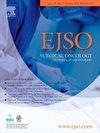实现MPR或pCR的非小细胞肺癌患者的新辅助和围手术期基于ci的治疗的生存结果比较:一项系统回顾和荟萃分析
IF 3.5
2区 医学
Q2 ONCOLOGY
引用次数: 0
摘要
本研究旨在比较可切除的非小细胞肺癌(NSCLC)患者围手术期与新辅助免疫检查点抑制剂(ICI)治疗的生存获益,特别关注那些在新辅助免疫检查点抑制剂治疗后获得主要病理反应(MPR)或病理完全缓解(pCR)的患者。方法:使用PubMed、Embase、Cochrane Library和ClinicalTrials.gov数据库进行系统的文献综述。进行了试验水平的比例荟萃分析来比较两种治疗方式。还进行了基于患者水平的分析,以获得不同围手术期治疗方案的更多证据。采用Cox回归和加速失效时间模型来分析实现MPR或pCR的患者的生存获益,以确定适当的治疗方式。结果23项研究被纳入试验级比例荟萃分析,其中MPR和pCR患者接受围手术期或新辅助ici治疗的1年、2年和3年无事件生存率(EFS)无统计学意义。MPR患者接受围手术期和新辅助ci治疗的中位EFS (mEFS)分别为40.1和32.1个月。与此同时,pCR患者接受围手术期和新辅助ci治疗的mEFS分别为35.4和34.2个月。多变量Cox分析显示,与新辅助化疗免疫治疗相比,围手术期化疗免疫治疗是MPR患者的有利预后因素(P = 0.038),而pCR患者则不是(P = 0.408)。结论接受新辅助和围手术期ci治疗并达到MPR或pCR的NSCLC患者的EFS相似。多变量Cox分析显示,在新辅助化疗免疫治疗后达到MPR的患者中,围手术期化疗免疫治疗是一个有利的预后因素,而在达到pCR的患者中则不是。本文章由计算机程序翻译,如有差异,请以英文原文为准。
Survival outcome comparison of neoadjuvant and perioperative ICI-based therapies in patients with non-small cell lung cancer achieving MPR or pCR: a systematic review and meta-analysis
Objectives
This study aims to compare the survival benefits of perioperative versus neoadjuvant immune checkpoint inhibitors (ICI)-based therapy in patients with resectable non-small cell lung cancer (NSCLC), focusing specifically on those who achieve major pathological response (MPR) or pathological complete response (pCR) following neoadjuvant ICI-based treatment.
Method
s: A systematic literature review was performed using PubMed, Embase, Cochrane Library, and ClinicalTrials.gov databases. A trial-level proportional meta-analysis was conducted to compare the two treatment modalities. A patient-level-based analysis was also conducted to obtain more evidence of different perioperative treatment regimens. Cox regression and accelerated failure time models were used to analyze the survival benefits in patients who achieved MPR or pCR for the proper treatment modality.
Results
Twenty-three studies were included in the trial-level proportional meta-analysis, wherein no statistical significance was observed in the 1-, 2-, and 3-year event-free survival (EFS) rates between patients with MPR and pCR receiving perioperative or neoadjuvant ICI-based therapy. The pooled median EFS (mEFS) was 40.1 and 32.1 months in patients with MPR receiving perioperative and neoadjuvant ICI-based therapies, respectively. Meanwhile, the pooled mEFS was 35.4 and 34.2 months in patients with pCR receiving perioperative and neoadjuvant ICI-based therapies, respectively. Multivariable Cox analysis showed that perioperative chemoimmunotherapy was a favorable prognostic factor compared with neoadjuvant chemoimmunotherapy in MPR patients (P = 0.038), but not in those with pCR (P = 0.408).
Conclusions
The EFS were similar among patients with NSCLC who received neoadjuvant and perioperative ICI-based treatment and achieved MPR or pCR. Multivariable Cox analysis indicated that perioperative chemoimmunotherapy was a favorable prognostic factor in patients who achieved MPR after neoadjuvant chemoimmunotherapy, but not in those who reached pCR.
求助全文
通过发布文献求助,成功后即可免费获取论文全文。
去求助
来源期刊

Ejso
医学-外科
CiteScore
6.40
自引率
2.60%
发文量
1148
审稿时长
41 days
期刊介绍:
JSO - European Journal of Surgical Oncology ("the Journal of Cancer Surgery") is the Official Journal of the European Society of Surgical Oncology and BASO ~ the Association for Cancer Surgery.
The EJSO aims to advance surgical oncology research and practice through the publication of original research articles, review articles, editorials, debates and correspondence.
 求助内容:
求助内容: 应助结果提醒方式:
应助结果提醒方式:


